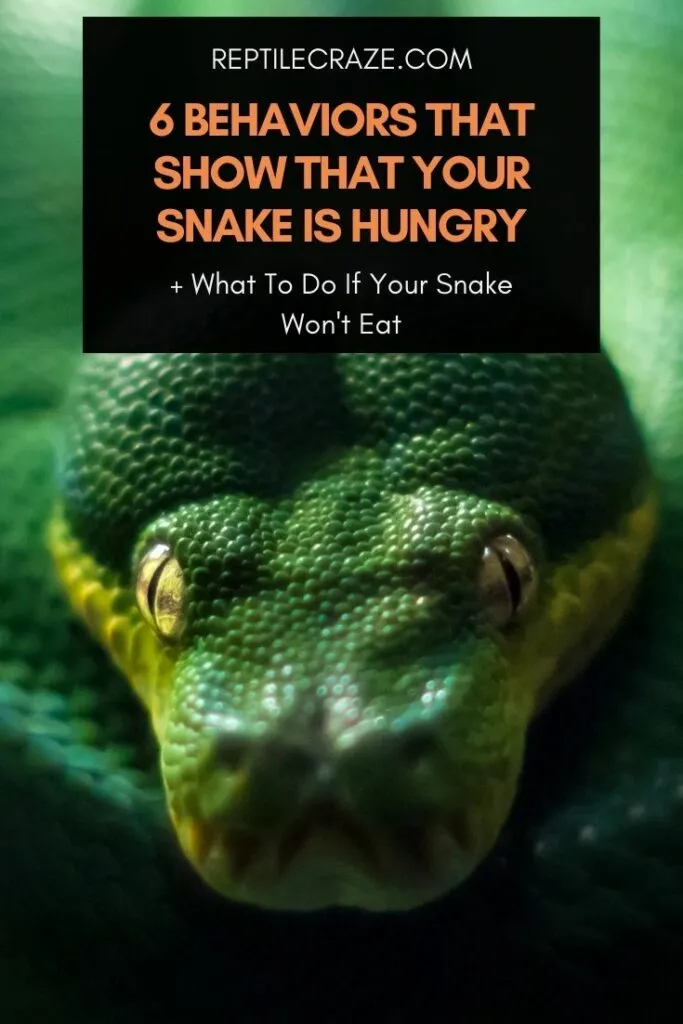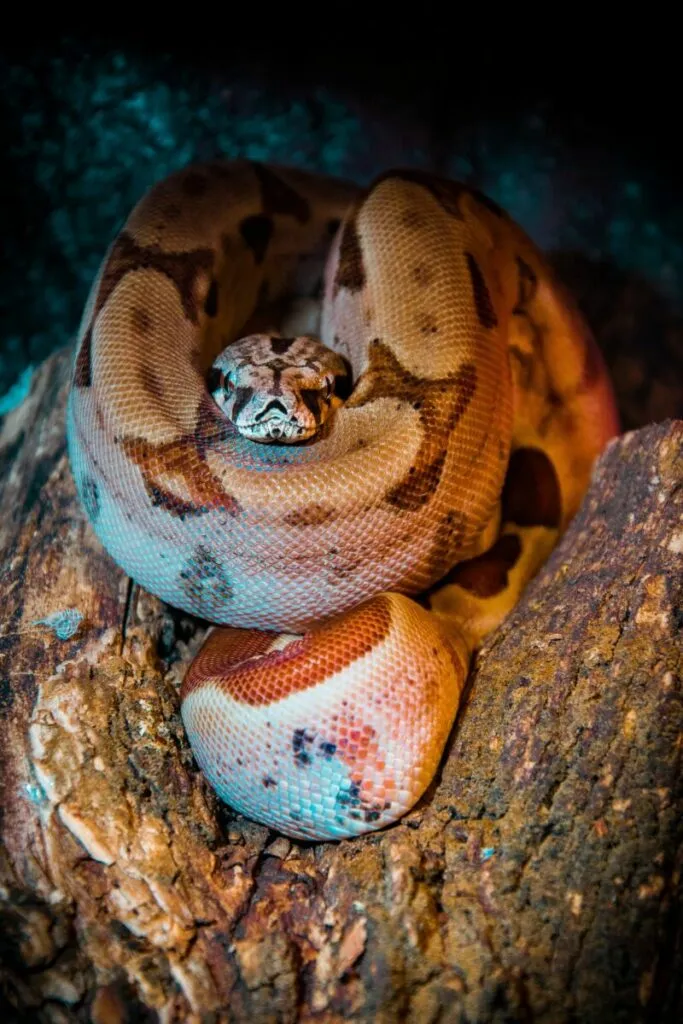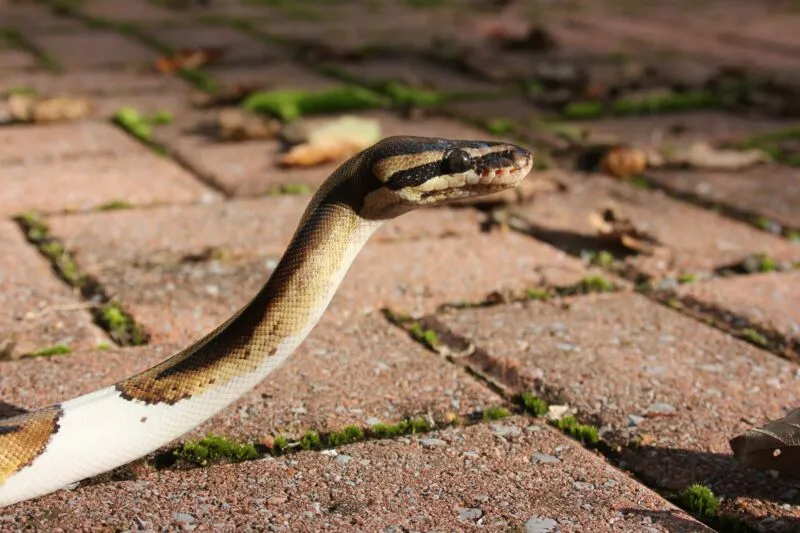
Figuring out when your snake is hungry can be frustrating! If you get this wrong, then
You can tell a snake is hungry when it exhibits specific behaviors such as: Prowling the front of the
Let’s take a look at the tell-tale signs your snake is hungry, how you can rectify this, and when you should be worried about your pet’s feeding habits.
Table of Contents
Key Signs Your Snake is Hungry
If you know what to look for, you can identify quickly when your snake is getting hungry. This is really important so that your snake doesn’t end up being underfed.
Signs that your snake is hungry, include:
1. Prowling Behavior
Your snake will move along the front of the enclosure more often. This can be hunting behavior or because it has been conditioned into trying to get your attention! ‘Hey, feed me, buddy, would ya?’.
A caveat here is that snakes also exhibit escape behavior. This is when they are stressed and are looking for a way out of their
If your snake has been fed very recently, climbing the front of the enclosure is more likely to be your pet trying to escape something inside of its enclosure that is causing stress.
2. Air Tasting
Snakes flick their forked tongues in and out of their mouths so that they can scoop up particles from the air and funnel them to the vomeronasal organ where the snake can smell what’s nearby.
This is a sure sign that your snake is looking for
If your snake is flicking its tongue more than usual, it’s getting hungry!
3. Moving Between Hides
Your snake’s enclosure should have plenty of areas in which to hide. Snakes love privacy, and they feel most comfortable if there are places they can go to when they are digesting
If your snake is moving in and out of hides regularly without staying inside, then it could be that your snake buddy is looking for

4. Soaking and Resting Less
A more active snake than usual is on the hunt or trying to escape stress. If your snake sometimes likes to soak in water and is doing this less, then that can also be a sign of needing to be fed.
Soaking can aid digestion, and so a snake is more likely to do this after it has been fed.
5. Focussing on You
Snakes are conditioned to associate you with being fed. If your snake seems far more interested in you than usual, it’s a good sign they want you to give them a tasty treat.
6. Feeding and Hunting Schedule
If it’s near to the time you feed your snake (usually every 1 – 2 weeks, depending on your snake’s age and species), then you should feed your animal, as it’s used to this schedule.
Likewise, depending on whether your snake is nocturnal or diurnal (active during the night or day), you will see hunting or prowling behavior at this time when it wants to feed.
Don’t expect a nocturnal snake to look for food during the day, unless it’s desperate!
How to Stop Your Snake From Getting Too Hungry
Now you know what to look for, what can you do to make sure your snake is always happy and contented and isn’t stressed by feeling hungry?
Keep your pet snake well fed by:
- Knowing its species-specific feeding habits. If you know what to expect, then you’ll know when something is going wrong.
- Altering feeding based on age. Younger snakes feed more than older snakes.
- Establishing a solid feeding schedule so your snake anticipates when it will be fed.
- Ensuring that you feed your snake correctly before going on vacation.
- Giving appropriate, nutrition-rich
food . The most commone pet snake species enjoy rodents such as mice or rats, but other snakes will feed on insects, amphibians etc. Depending on your region, live vertebrates like mice or frogs cannot be fed to your snake as it will be cruel. Frozen options are widely available. - Being proactive about feeding issues and not waiting for your snake to become ill.
When to Worry if Your Snake Isn’t Eating
Even with the right intervention to stop your snake from getting hungry, some feeding issues are signs that your snake is ill. If any of these issues occur, consult a vet as quickly as possible:
- Drastic change in feeding: Refusing to eat for more than two weeks.
- Bad shedding: Your snake should shed its skin several times a year. If this happens in patches rather than one full shed and your snake isn’t eating, your snake’s health isn’t the best.
- Lethargic: Snakes love to sleep and lay about in their hides, but if your snake suddenly appears more lethargic than normal and is refusing to eat, then they could have an issue such as a parasite.
- Stargazing: If your snake is refusing to eat and is staring upwards for long periods, this is a sign of ‘stargazing’, usually brought on by a neurological condition.
- Mouth Rot: If your snake is bleeding in or at the mouth, has pus leaking from its mouth, or its mouth is swollen and your pet is breathing with its mouth open, this can indicate mouth rot. I couldn’t have used the word ‘mouth’ more in that sentence even if I’d tried!
- Respiratory Issues: Snakes will stop eating if they have a respiratory infection. Sneezing, eye or nose drainage, wheezing, and mouth breathing are all possible signs of this. Respiratory problems can also result from improper
tank conditions like temperature and/or humidity.
What to Do if Your Snake Won’t Eat
If you are certain there is no underlying health issue that requires immediate treatment, and your snake is refusing to eat, it is likely to be the result of stress.
The first thing to do is to make sure that your snake’s environment correctly mimics its natural habitat.
Snakes live all over the world, so different species require different setups!
After making sure the temperature, humidity, lighting, day/night cycle, and
Are there enough hides? Is your snake a climbing species? If so, have you given it places to climb? Is your snake being disturbed too often?

Remember that most snakes enjoy being alone, so if your snake is living with another snake, this can cause all manner of stress for both animals.
Snakes are cannibals as well, so it’s rarely recommended to keep two together. If you’ve made this mistake, quickly rectify it by setting up a separate enclosure for each snake.
Conclusion
I hope you found this article helpful, and that you’re able to use this information to tell when your snake is hungry. If you have any questions about your snake’s feeding habits, please do leave a comment below and I’d be glad to help.
Remember, if you have any serious concerns, contact your vet to help your snake get back to being happy and well-fed.
- Enchi Ball Python: A Unique and Stunning Morph of Python regius - March 27, 2025
- Emerald Tree Monitor: The Enigmatic Green Guardian of the Rainforest - March 26, 2025
- The Egyptian Cobra (Naja haje): A Fascinating Serpent - March 25, 2025
